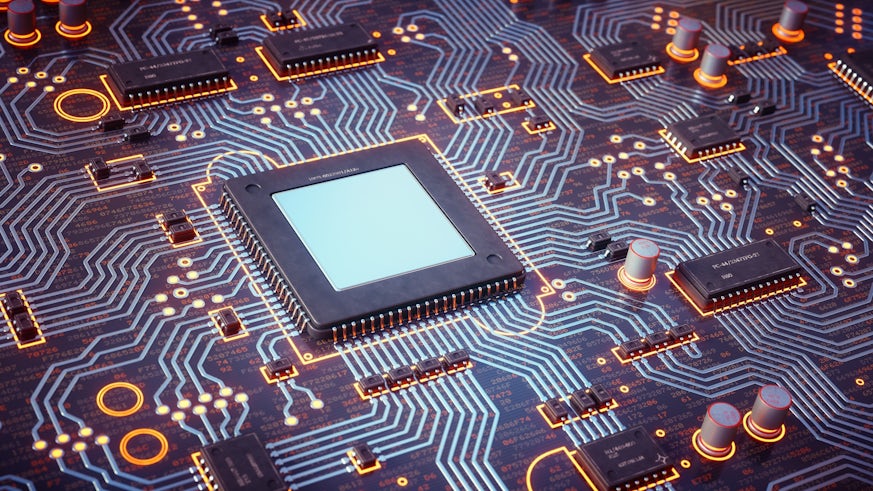Scientists spy unstable semiconductors
4 November 2019

Scientists from Cardiff University have, for the first time, spotted previously unseen “instabilities” on the surface of a common compound semiconductor material.
The findings could potentially have profound consequences for the development of future materials in the electronic devices that power our daily lives.
Compound semiconductors are an integral part of electronic devices, from smartphones and GPS to satellites and laptops.
The new findings, published in the leading journal Physical Review Letters, have revealed how the surface of a commonly used compound semiconductor material – gallium arsenide (GaAs) – is not as stable as previously thought.
Using state-of-the-art equipment at Cardiff University’s School of Physics and Astronomy and the Institute for Compound Semiconductors, the team have identified small pockets of instability in the atomic structure of GaAs that have a tendency to appear and then disappear.
It is the first time that this phenomenon, dubbed “metastability”, has been observed on GaAs surfaces.
Co-author of study Dr Juan Pereiro Viterbo, from Cardiff University’s School of Physics and Astronomy, said: “At the moment we do not know whether this phenomenon is affecting the growth of semiconductor device structures – this is what we need to study next.
“If this phenomenon were to occur during the growth of semiconductor devices then this could have profound consequences.
“Ultimately these findings are helping us to better understand what is happening at the molecular scale, which will enable us to develop new materials and structures, reduce defects in existing compound semiconductor devices and therefore develop better electronics for our communication systems, computers, phones, cars and more.”
Key to this discovery was the availability of equipment with capabilities that do not exist anywhere else in the world.
The labs at the School of Physics and Astronomy and the Institute for Compound Semiconductors have a low energy electron microscope combined with a molecular beam epitaxy machine which allows researchers to observe dynamic changes on the structure of materials whilst compound semiconductors are being fabricated.
Molecular beam epitaxy is the technique used to fabricate or “grow” compound semiconductor devices and works by firing precise beams of extremely hot atoms or molecules at a substrate. The molecules land on the surface of the substrate, condense, and build up very slowly and systematically in ultra-thin layers, eventually forming a complex, single crystal.
“Even though GaAs have been well studied, the use of low energy electron microscopy in the growing process allows us to observe dynamic events that have never been seen before,” concluded Dr Viterbo.
Share this story
It is a friendly, approachable School with a strong commitment to teaching excellence and world class research in physics and astronomy.



